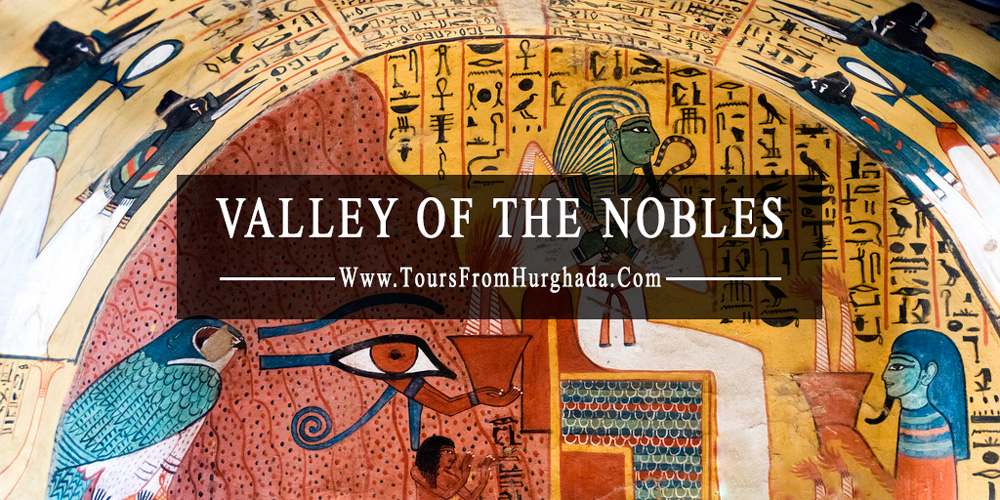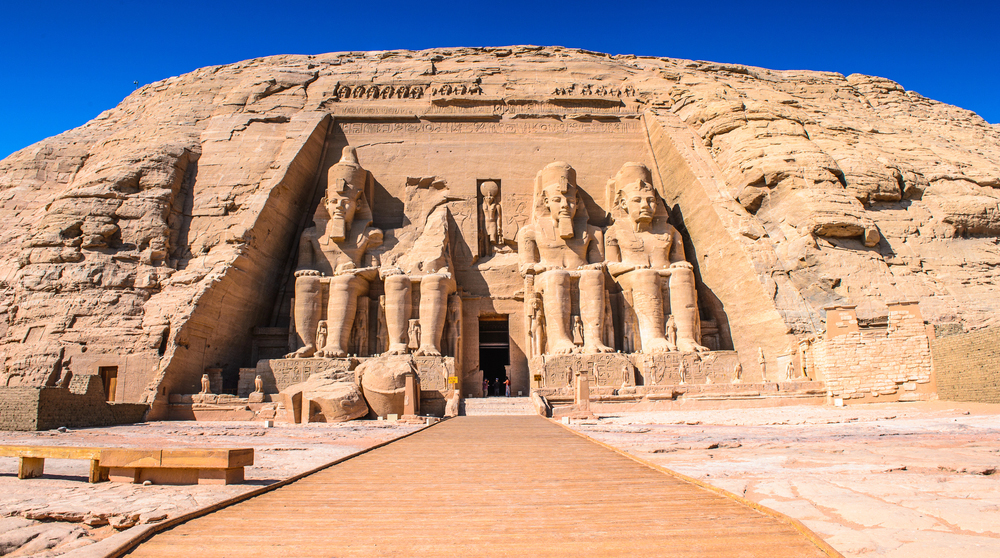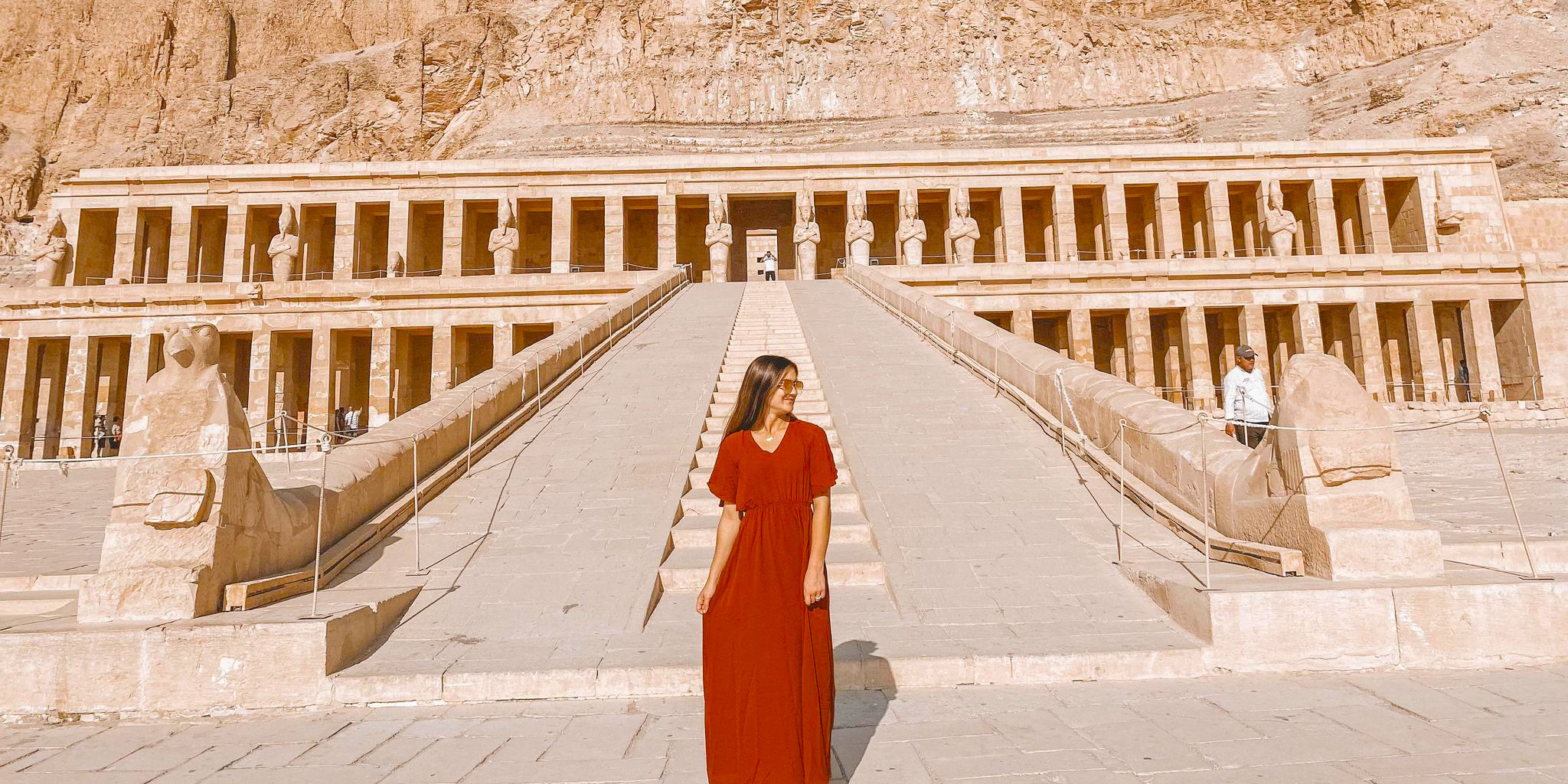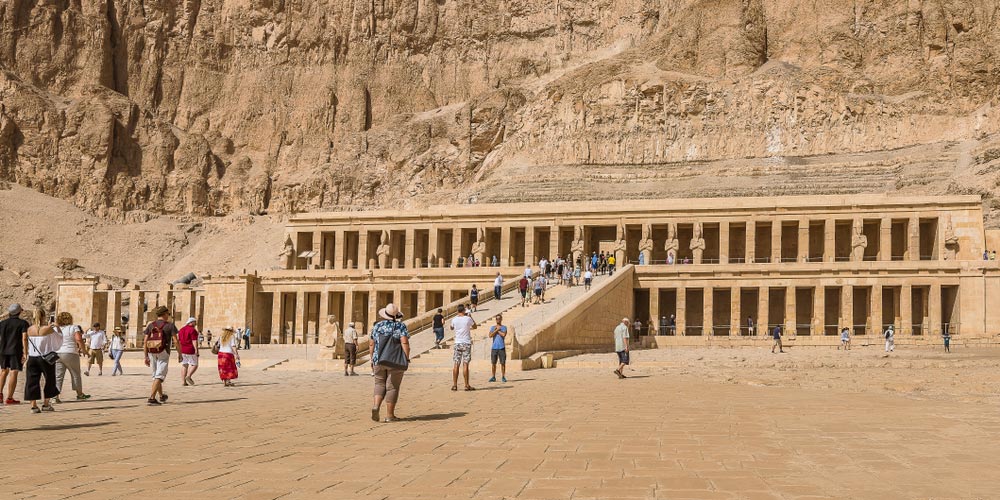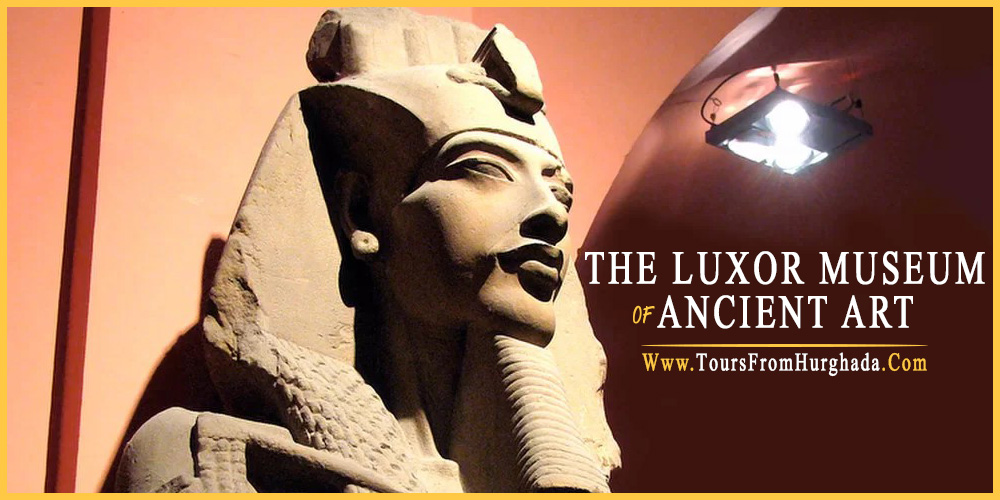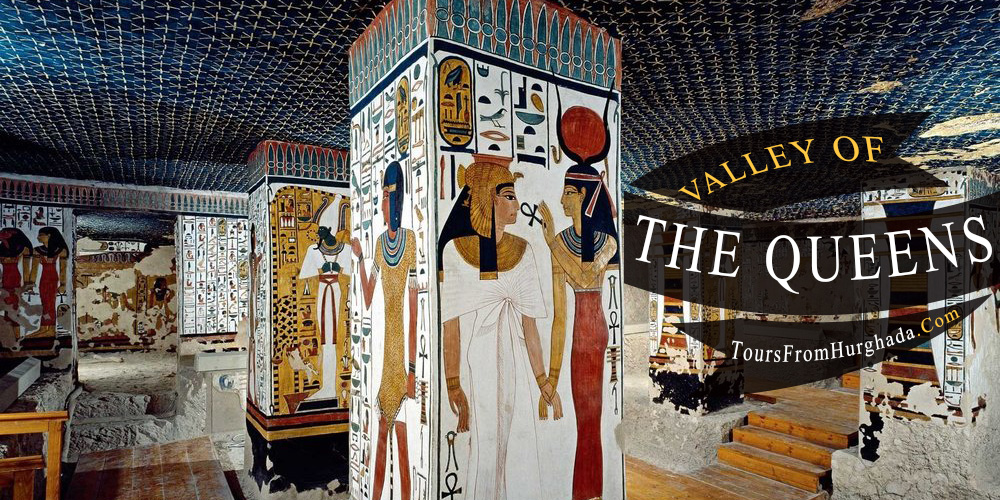You say glory and you’ll be given the inner details of the Valley of the Nobles. You ask for loyalty and you’ll be offered the deeds of the official, pharaohs, and administrative painting the valley’s walls to dive between. And if you refer to pride then you’ll be introduced to the tombs of Ramose and Sennufru hosted inside to look up their achievements and how much prestige they emit.
The Valley of the Nobles is one of the enchanting hidden destinations of Luxor. It tells the story of the great individuals who stood behind their pharaohs while creating history with the use of artistic design. It also acted as a diary containing drawings of daily life. The different reactions you’ll give during your tour inside will be a part of the Valley of the Nobles’ history as solid proof of the unfading trails its site still manages to leave on minds despite many years had passed.

Why Does the Valley of The Nobles Catch Attention?

Strip off all the uncertainties you might have about a visit to the Valley of the Nobles and just put into consideration one thing; a visit to the Valley of the Nobles will be a roller coaster to the hidden yet important part of Egypt’s history, offering you the missing pieces, the tucked-down factors that made the royals and nobles’ power escalate during ancient times.
As the Valley of Nobles implants tombs of many governors, administrators, generals, and other important officials from the New Kingdom (1550 BC- 1069 BC). The Valley of the Nobles is about 415 tombs that were not amassive or extravagant like the tombs of the kings but contained many simple beautiful decorations and valuable information that showed what life was like back then.

The Purpose behind Building the Valley of the Nobles
Included in the history of the Valley of the Nobles are many tombs designed to tell the full life story of their inhabitants by using wonderful paintings on the tomb walls depicting every single detail of their lives in the most majestic manner. The paintings on display might have seen better days, however, their values seemed to increase in volume throughout history to leave more exclusive gestures in the mind of the travelers.
Maybe you would get over your adventure inside, but you, for sure, will never get over the essence that each of the adventures holds. It’s an essence depicted in the journeys of the officials and leaders in polishing the royals’ eras as well as the different bonds created between the rulers and their nations from administrators and high officials to genius generals to show you how grateful they were and will always be!

The Valley of The Nobles Location

The idea of bringing a memorial to life didn’t feel any more right than the moment it was announced building a sanctuary to store inside a power of whole millennia and a significance of many centuries of history! Valley of Nobles is simply hundreds of rock-cut tombs of nobles from ancient Egyptian times that were discovered along the west bank of the Nile in the City of Luxor in an area known as Sheik Abd El-Gorna.
And, as if the distinctive and powerful value of the valley was meant to be, it is located near Hatshepsut's Temple, one of the most outstanding sites in Egypt over extending periods of time and carved into the hillside. The Valley of the Nobles is another page in ancient Egypt’s history and is filled with vivid supreme carvings with so much supremacy to add more to Egypt’s esteem.

Facts about Valley of the Nobels "Sheikh Abd el-Qurna"
For having some strings attached to the Valley of the Nobles, here are some interesting facts about Sheikh Abd el-Qurna:
- The site is a grand necropolis controlling a group of 146 around it like pawns from high officials to nobles that served the ancient pharaoh of Egypt.
- The burial space splits into a couple of parts.
- The Upper part of the Valley of the Nobels necropolis involves the cemeteries of the high-ranked governors as well as a group of priests and ancient kings.
- The Lower necropolis holds sequels of tombs housed by figures belonging to lower classes from employees to laborers.
- Sheik Abd El-Gorna necropolis was ranked among the most significant burial site with so much dignity and honor mentioned across Ancient Thebes’ Western Bank.
- Another interesting noticeable fact about the necropolis is hosting more than one grave for the same figure, one at the head of the mountains and the other at its foot.

The Valley of the Nobles’ Design
The singular possessions that the Valley of the Nobles spin around their orbits are spoken about with immorality and simplicity while each detail of the valley’s design is referred to with true eternity. The Valley of the Nobles’ cemeteries features simple patterns of structure with resemblance and similarity between them.
Added to that, is the cemeteries’ wholesome and complete form accentuated by the high stamina of the valley’s walls against time since the colored scenes on display managed to overcome the inevitable erosion and possible peeling, proving the high maintenance techniques applied to it on the inside and out. The mentioned scenes deliver stories from different settings from workers thriving in their lands to shots of the artists, craftsmen, and architects’ everyday life in addition to actual scenes from the thick of the ancient court back then.

The Valley of The Nobles’ Different Artistic Tombs

Being a shelter for the ancients to lay in with sagas of cemeteries in symmetry back-to-back to each other, the Valley of the Nobles has a group of tombs that made the greatness scale bounce in all directions:
1. Tomb of Ramose "TT50"

The unique information about the Valley of the Nobles extends to cover one of the most famous tombs; the tomb of Ra-Mose (number 55). He was the mayor of Thebes over the reigning course of Amenhotep III and Akhenaten. Even more, he enjoyed a great deal of power during pharaoh Amenhotep III’s reign. His tomb consists of a rock-cut court with a central doorway leading to the inner hall and below are shafts leading to the burial chambers where his mummy was not found. However, the decorations were not complete as Ra-Mose moved with the new king, Akhenaton, to the new capital of Akht-Aton (known also as El-Amarna), where his tomb’s decoration was left unfinished. His tombs shed some light on the period of Akhenaton himself and his attempt to enforce Atonism (The worship of Aton, the Sun God).
2. Tomb of Re-Khmee-e "TT100"

An unnegotiable fact about the Valley of the Nobles is it will always be pointed at with endless distinctiveness, especially with the never-ending series of tombs it hugs which the Tomb of Re-Khmee-e is a grand part. The tomb of Re-Khmee-e, (Number 100), who was the vizier during the reign of pharaohs Tuthmosis III and Amenhotep II. The tomb holds magical decorations that determine the responsibilities of the vizier during ancient times and details about the arrival of foreign delegations carrying presents and tributes such as agricultural products, utensils, and rare animals to the pharaohs. Being presented in front of the tombs might be the starting point for lots of travelers to look up the life record of their owners with the help of the pieces of information they hear from their guide and intrigued the curious part in them. Or, maybe it was the ending point of some travelers’ research after so much googling about the owners from their achievements and hard work to their devotion to the nation and its prosperity and they might have wanted to wrap the deal by a visit to their memorials!
3. Tomb of Nakht "TT52"

Tracking the singular traces of Egypt’s ancient heroes and protagonists will lock you in a close circle or it might lead you to the Nakht Tomb. The chapel of Nakht Tomb, (Number 52), is also quite famous as it contains the mummies of a husband and wife. The husband was a great scribe and an astronomer from the temple of Amon during the reign of Pharaoh Tuthmosis IV while his wife was a chanter and a headmistress within Amon’s Temple. Their tombs were small but had beautiful decorations with brilliant colorful scenes. Visiting there, it’ll be hard to bottle up your enthusiasm and keep your imagination to yourself since it’ll spread rare secrets and facts you didn’t contemplate devoting even a little of your attention to digging for.
4. Tomb of Menna "TT69"

Ancient Egypt isn’t new to making a wave of honor hitting its observers; it’s a process operated by a wide variety of landmarks including temples, museums, and tombs. The Tombs of the Nobles will get you more acquainted with ancient Egyptian history and the heroes who grew its seeds from the very start, among which came the Tomb of Menna, an honest land surveyor. The tomb of Menna, (Number 69), who was a land surveyor and a scribe, is also included as the most beautiful since it’s filled with many decorations and wall paintings as well as carvings of full day-to-day scenes dating back to ancient times which provided countless details about the traits and customs of ancient days like bird-hunting and the influence of music on their culture. It's safe to say that your exploration will make you have more strings attached to the roots of ancient Egypt as well as the sharp figures who implanted them!

The Valley of the Nobles’ Importance in Egypt’s Tourism
Ancient Egypt’s position started with a number of pharaohs, officials, and leaders who wanted their memory to loom on the horizon and for their miraculous efforts to be told books about even after their death. They built a museum here, a temple there, and many tombs in between to keep their bodies and all the power they stood up with reserved towards the foreverness. That’s why a visit surrounded by the Valley of the Nobles’ atmosphere is not just about roaming a group of scattered carvings, instead, you’ll be touring among bodies who were the reasons behind Egypt’s great legacy.
Bodies whose owners created an ancient fancy culture over the years by striving to the very end and invincible stamina to make it up for any downs and misery the country might have come through back then. This is where the importance of the Valley of the Nobles in Egypt’s tourism came from.

Conclusion
Because you deserve better, our agency has been planning the best for you. Tours from Hurghada offer ancient triumphant stories and great epics to hang on each of their hidden secrets and bathe in the crystal-clear effects they left in a wide variety of genuine trips. We’ll help you build a bridge to the core of the ancient Egyptian civilization wherein lots of odysseys took place and numerous opponents were shut off. We’ll show you a detailed analysis of victory, piles of accomplishments, and impeccable creativity all through cultural trips to Luxor from Hurghada. In addition to the ancient heritage of ancient Egypt, you’ll have a hint of, we’ll offer you our flawless amenities to keep you company. Now, share with us your thoughts about a trip, and let us guide you further!
From: $300/Per Person
2 Days - 1 Night
2 Days Luxor & Abu Simbel Trip from Hurghada
Enjoy 2 Days Luxor & Abu Simbel Trips from Hurghada joined by a professional Egyptologist tour guide and ...
From: $220/Per Person
2 Days / 1 Night
2 Days Trip From Hurghada to Luxor
A private 2 days trip from Hurghada to visit Luxor temple, Karnak temple, Valley of the Kings, Queen Hats...
From: $370/Per Person
2 Days- 1 Night
Two Days Cairo and Luxor Trip from Hurghada
Enjoy a gorgeous two days Cairo & Luxor trip from Hurghada to visit the best attractions of Pharaohs, the...
From: $530/Per Person
3 Days / 2 Nights
3 Days Tour to Cairo, Abu Simbel & Luxor from Hurghada
Enjoy 3 days tour to Cairo Abu Simbel Luxor from Hurghada by discovering the top of Cairo, Luxor, plus th...

